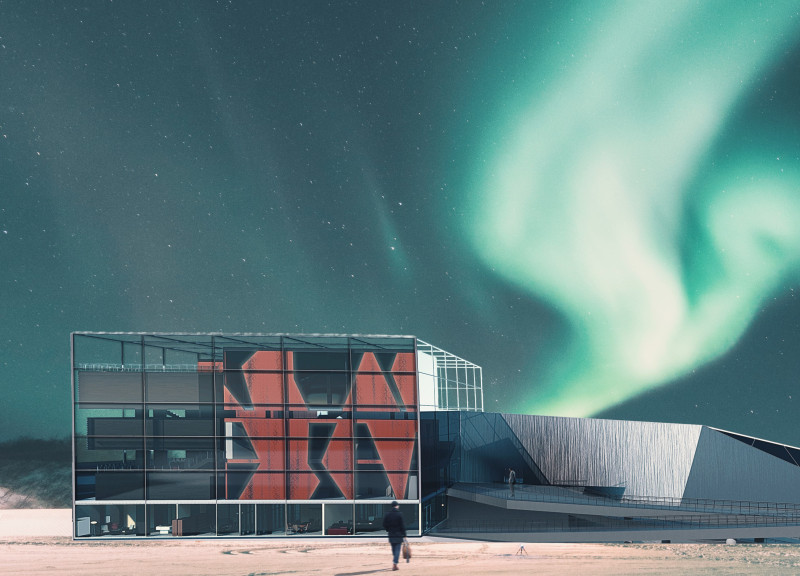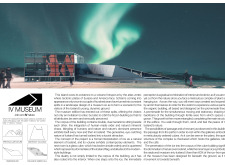5 key facts about this project
The IV Museum is located on a volcanic island and embodies the unique geological features of Iceland. The design focuses on themes of ice and volcanic activity, represented by the acronym "IV," which refers to the Greek number four, symbolizing the four zones within the glassy cube. This emphasis on "Ice" and "Volcano" shapes the overall concept, linking the building to the surrounding landscape.
Architectural Form
The layout of the museum responds directly to the natural cracks and splits in the terrain. Visitors are encouraged to explore the building by moving around and through it. This relationship between the architecture and the landscape highlights the museum's connection to Iceland's natural beauty.
Exterior Character
The building features an exterior design of a glass cube that is broken and quartered. This form gives a modern interpretation of the Icelandic flag. By doing so, it creates a conversation between national identity and contemporary architecture, giving the building a distinct presence within its environment.
Spatial Organization
Inside, the museum integrates both interior and exterior spaces, allowing for a smooth flow as visitors transition between them. The layout consists of a checkered design that includes various galleries, a café, and a lobby. This organization makes the space accessible and engaging for visitors while maintaining focus on the natural surroundings.
Design Highlights
One of the notable aspects of the IV Museum is its use of ice within the structure. This design choice emphasizes the influence of nature on the overall concept. With about 60% of the ice located below ground, it invites visitors to delve deeper into the museum experience. The gallery dedicated to the northern lights features an all-glass facade, creating an immersive atmosphere that connects the indoor space with the natural wonder above, deepening the visitor's experience of Iceland’s geological identity.

























































